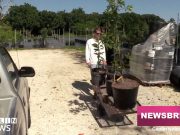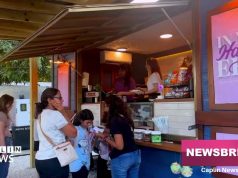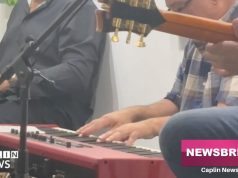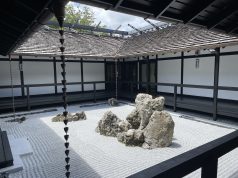Para leer este artículo en español, haga clic aquí – Miami: un laboratorio de idiomas en la vida real
My fascination with foreign languages, specifically Spanish, and Latin America began as a child in elementary school in River Ridge, Louisiana, a suburb of my hometown of New Orleans. I remember watching old World War II movies on TV, where there was always an American soldier who could speak German or French. I knew from a very young age that this soldier had an advantage over the other American soldiers, who only spoke English. I thought it would be cool to have that ability when I grew up.
I looked forward to the day I could walk the streets and shop in the stores of another country outside of the United States and converse with people in Spanish. When I was in 8th grade, the nuns at my Catholic elementary school were from Spain and they taught us very basic Spanish. I was hooked!
In the seventies, in high school and at the University of New Orleans (U.N.O.), I continued to take Spanish classes and learned some grammar, verb tenses, and vocabulary, but I cannot say that I was fluent. Also, I thought I would forget everything as soon as I graduated from U.N.O. However, those classes lit a spark in me to open my mind to languages and cultures other than my own.
When I moved to Miami in 1990 I thought this would be an opportunity to resurrect my limited Spanish. To my surprise, when I started taking Spanish classes at Miami-Dade College (from scratch again), I was surprised that I remembered more than I thought! Also, I knew that Miami had a high percentage of Latin population and I could use Spanish in my daily life.
I remember the first time I dared to speak Spanish in Miami with a stranger outside the classroom. I went to a dry cleaner and along with the pants that needed cleaning, I had a tie that had a seam that was coming apart. I asked the lady behind the counter “¿Puede coser esta corbata?” The lady knew I was a gringo and knew what I was doing: practicing my rudimentary Spanish with her. She waited patiently with a big, friendly smile as I struggled to get the words out. She replied, “¡Por supuesto, señor!” Ever since my conversation with that nice lady, I have never been afraid to speak Spanish in Miami, Costa Rica, Mexico, Colombia, Mexico or Spain.
In the 1780s, the term “melting pot” began to be used as a metaphor to describe the United States. It meant that all of the many immigrant cultures (with their own languages) would “melt” into one, namely English. This meant that the various languages of the newly arrived immigrants should no longer be used.
It was thought that this “melting” would strengthen democracy and unite the various cultures. It hasn’t always worked out this way. A more realistic view is that the United States is a “salad bowl,” where we are all Americans but do not have to give up our individual identities. Like a salad, our differences add flavor and bring us closer together, instead of dividing us.
If you are an FIU student and want to join me in opening doors, strengthening democracy, and helping the diverse cultures of Miami understand each other more, not less, practice your Spanish at “La Hora de Café” from the FIU Department of Modern Languages, organized by graduate assistant Nick Kukuk.
If you’re not an FIU student, then practice Spanish in the real-life Miami language lab, including the dry cleaner’s.
Thanks to the multilingualism of Miami and FIU, I can now walk the streets of San José, Costa Rica or Madrid, Spain, and ask someone for directions (in Spanish), even if I already know the answer!

































